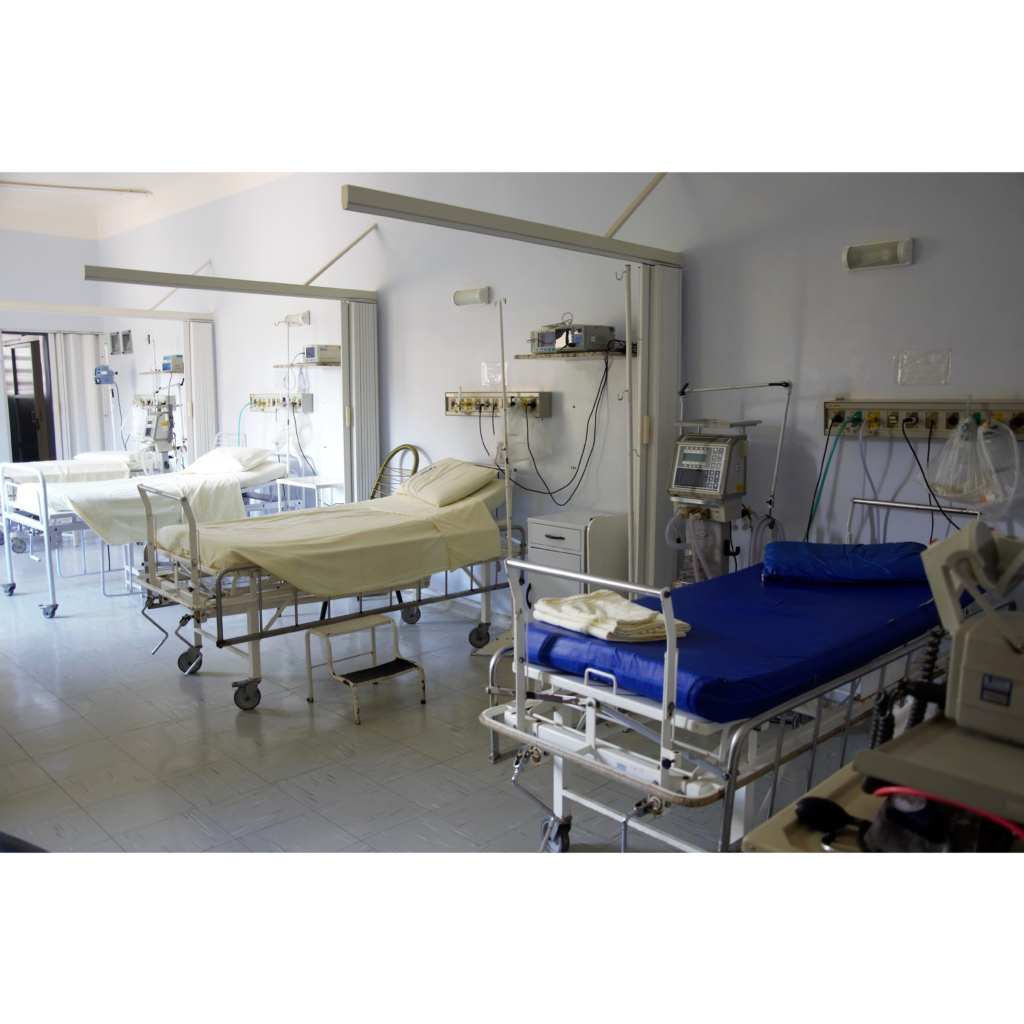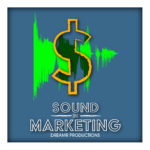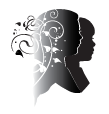Sound In The Healing Process
I wanted to explore both sides of it. Not just the therapeutic side, but the side of sound that slows down or even stunts the healing process. This may seem a far stretch from my focus of sound in marketing but bare with me as I break it down. I have a point. I promise.
History
Sound aiding in the healing process is not a new concept. The earliest findings of its uses were with the Aborigines in Australia. Ever heard of a didgeridoo? Also known as a yidaki, a didgeridoo was a man-made instrument created to emit low frequency sounds in order to heal ill tribe members.
Not only did these sounds repair broken bones and muscle tears, the sounds also stabilized individuals who were mentally ill, soothing their minds and internal flow.
In Ancient Egypt, Egyptian priestesses would use a sistra, a type of musical rattle with metal discs, while performing healing rituals. This accompanied by a harp and played in reverberant chapels or burial chambers generated sufficient amounts of ultrasound, which facilitated healing at the cellular level. This process reduced pain, and increased circulation as well as mobility of soft tissue.
The Greco Roman period used sound and music as a therapy to “soothe the psyche and reduce anger and aggression”. Can you imagine the Roman Empire without that outlet?! Many of the healing temples had incubations, a process in which patients underwent dream sleep during their stay. The reverberant spaces and calm settings used vibrational relaxation to its full potential.
Cancer and Vibroacoustic Therapy
From the findings and practices of the past, vibroacoustic therapy was born. Vibroacoustic therapy uses audible sound vibrations to improve health and reduce stress. This type of sound therapy involves using speakers embedded in recliners, mattresses, and special mats to transmit music and sound vibrations directly to the body. There’s evidence to support its benefits, specifically its ability to promote relaxation and reduce pain and symptoms in cancer patients and those recovering from surgery.
George Patrick, Chief of Recreation Therapy at the Clinical Medical Center of the National Institutes of Health conducted an experiment on the effectiveness of vibroacoustic therapy. He used 41 observations from 27 patients who experienced 30- to 40-minute vibroacoustic therapy sessions associated with chemotherapy treatment. Results revealed a 61% overall reduction of patient-reported symptoms.
According to a paper written in 2004 by Chris Boyd-Brewer and Ruth McCaffrey:
“Research in vibroacoustics and its applications have demonstrated that this nonpharmacological, noninvasive therapy reduces pain and symptoms of disease, induces relaxation, and assists in the rehabilitative processes.”
“Dr. George Patrick, chief of recreation therapy in the Rehabilitation Medicine Department Clinical Center of the National Institutes of Health (NIH) conducted a program of relaxation for pain and symptom-reduction to see the effects of vibroacoustic therapy on patients with various medical conditions. The study consisted of 272 patients with a myriad of diagnoses from “cancer, heart, lung, and blood disorders, infectious diseases, mood disorders, and miscellaneous conditions.
“He determined that a 22-minute session resulted in a “cumulative reduction of pain and symptoms by 53%” . In addition, other side effects such as tension, fatigue, pain, headache, and nausea were reduced after the therapy. A later study, led by Boyd-Brewer, emulated Dr. Patrick’s experiment with a smaller sample group of 41 patients partaking in chemotherapy at Florida’s Jupiter Medical Center in Palm Beach County. Boyd-Brewer reached a similar conclusion to Dr. Patrick in that vibroacoustic therapy reduced pain and symptoms.”
For Example
Let’s stop here for a minute and create a scenario. You’ve got a product. It’s scented candles. You want to put together a marketing campaign to sell those candles. I would imagine that one of your companies main missions would be to advertise these candles as calming, warm, and comforting. I’m taking liberties for the sake of the argument so just roll with me for a minute.
Now my guess is that the profit margin on selling candles isn’t very high. You won’t have a very big budget to put together any big-time broadcast commercials; you’ll have to be creative. How can you make your product stand out from not only the massive amounts of candle manufacturing companies you are in competition with, but the even more infinite amount of marketers that have the budget to sink millions of dollars into advertising.
Well, here’s one thing that you can easily get your hands on. A sound identity. What if you could come up with a sound for your candle? Or even starting at the more basic level, a tune or a theme song of some sort?
Maybe you don’t have the musical knowledge to facilitate writing something like that right off the bat but you do know (now) that the lower frequencies are highly relaxing and therapeutic. OK, so now you go to a micro-licensing site and listen to all the ambient instrumental tracks that focus on the lower frequencies. More bass, more drone and don’t forget to find that minimalistic low key melody.
Not saying this method will get you on the map to being the next TED talk or anything…but it could get you that much closer to a brand sound identity before ever hiring a sound strategist. Bringing that much to someone like me would exponentially streamline a creative session plotting out your future company wide sound.
OK, so back to my geek out of information.
Measuring Sound Vibration
The normal human can hear frequencies or hertz (Hz) between 20 and 20,000 Hz. Below 100Hz are considered low frequencies and below 60Hz are described as a “flutter” rather than an actual vibration. Lower frequencies are most strongly felt. They can actually contribute to an experience of relaxation and pain management. Olav Skille, who developed vibroacoustic equipment, concluded that 30-120 Hz are the most therapeutic; between 40-80Hz being most ideal.
As stated before in the early history of sound, vibrations don’t only soothe ailing patients, they can heal them.
Ultrasound uses frequencies in the sonic range to project images, prescribe diagnosis, and even in the treatment of tissue contractures. Lithotripsy is used to shatter kidney stones.
Frequencies are so important that they can affect not only your emotions; they affect you at the cellular level. According to Dr. David Hawkins in his book Healing and Recovery, audible frequencies produced by sound and music can elicit both positive or negative emotions to your brain and go as far as affecting cells and tissue positively or negatively.
Neuroscientist Seth Horowitz wrote in his book The Universal Sense: How Hearing Shapes the Mind certain rhythms may affect neural hormonal changes to your cortex. Just in case you weren’t aware, the cortex is the largest part of your brain that plays a big role in memory, attention, perception, cognition, awareness, thought, language, and consciousness. Basically everything. Sound familiar to your marketing plan? This is the part of the brain we as marketers most want to affect.
Here’s a great summation of a research paper in 2005.
“The low vibrations increase cellular movement, thus increasing energy and cellular regeneration in the body. Consequently, inflammation and pain are reduced because of this treatment. With the addition of music, patients are prone to have an increase in relaxation and decrease in psychological disturbances such as depression, anxiety, and nausea. Furthermore, individuals with behavioral impulses and autism are found to have a decrease in aggressive outbursts and actions. If these results are consistent in future studies, vibroacoustic therapy can replace pharmaceuticals and eliminate the potential side-effects that arise from usage.”
Another Example
Because not all of us work with Hz everyday, I’ll explain it in a different context to show you relevance. My speaking voice tends to land at around 500Hz. James Earl Jones tends to land in the 85 Hz range. Fran Drescher hovers around 900Hz-2kHz. As stated before, 40-80 Hz is ideally the most “therapeutic”…do you get my drift? I think we can all pretty much agree that James is much more pleasant to listen to than Fran.
So if you’re picking music and sounds and tones in a frequency not appropriate to your brand or product or at an off-putting level frequency wise, you’re going to make some people feel uncomfortable. But if you nail it and find that sweet spot frequency, you are bonding yourself to your consumer that much more sincerely.
Very different sides of the spectrum…no pun intended.
Hospitals and Sound – The Battle
Although they should be, hospitals are not the best places to get better. Granted, sometimes it is necessary to be admitted but any good healthcare provider will tell you the best place to heal, is at home. Why? Because it is more relaxing, more comfortable, more familiar, and for the sake of this discussion more sonically appropriate to your wellbeing.
Imagine For a Moment…
You’re lying in a hospital bed. You hear the faint beep of your IV or your heart monitor, the phone outside at the nurses station keeps ringing, constant foot traffic beyond your door all hours of the day and night, visiting hours bringing even more foot traffic your way, and amongst all of that somehow you have a silent alarm when you’re calling the nurse. And then lets add even more fire to the fire. It’s late at night and the buzzing of the fluorescent lights is keeping you up. The stretchers are being transported from one side of the floor to another through the doors that are in desperate need of oiling. And then just as you’re drifting off, your nurse comes in and says, “it’s time to check your vitals”.
It’s just noisy.
Constant alarms of hospital technology and hospital “noise” in general is a real problem. Nurses and doctors have become desensitized to all the different sounds and so patients are forced to hear it all for far too long. This is called “alarm fatigue”.
Alarm fatigue is sensory overload. When clinicians are exposed to an excessive number of alarms, it can result in desensitization to alarms as well as the cause of ignored alarms.
This can also be terrible to the patients recovery time as well. According to an article in nurses.org, one children’s hospital was reported to have 5,300 alarms in a day – 95% of them were false. Another hospital reported at least 350 alarms per patient per day in the intensive care unit. The Food and Drug Administration reported more than 560 alarm-related deaths in the United States between 2005 and 2008 and between January 2009 and June 2012, they reported 80 deaths and 13 severe injuries.
And It’s Not Just Alarms
The World Health Organization says nighttime noise levels above 55 decibels can routinely cause sleep disturbances and an increased risk for heart disease. In 2005, some hospitals were recorded as having 100db level sounds at night! That’s as loud as a chainsaw! This episode of Sound In Marketing was mixed at -6db.
The Patient As A Consumer
So what does all of this have to do with sound in marketing?
The patient, at least in America, is now being looked at as a consumer.
The hospitals aim to please and in so doing, they’re making huge improvements to a patients experience. Millions and millions is being spent on sound improvements.
Nick Dawson, executive director of the Johns Hopkins Sibley Innovation Hub says:
“It’s not any one particular thing” driving the shift in hospital design. Some organizations are motivated by revenue streams from intellectual property. Some are looking at it as a way to mitigate the Hospital Consumer Assessment of Healthcare Providers and Systems (HCAPHPS). And some are looking at it and saying, ‘There’s this untapped voice of the patient out there and we need to re-tailor our business toward them.”
The Affordable Health Care Act
According to Healthcare.gov, the Affordable Health Care Act has 3 main objectives: Make health care affordable to all by creating subsidies to lower the cost for lower income families, expand the Medicaid program, and support innovative medical care delivery methods designed to lower the cost of healthcare in general. That third one is key to us.
The experience of a hospital stay is a sell.
Between the initiatives of the Affordable Health Care Act, the constant competition of hospitals trying to one-up other hospitals on being bigger and better, and the infusion of design minded thinking, there is a sound revolution happening now in America’s hospitals.
The greed and desire for big business amongst hospital administrations along with the governments drive to make better experiences available is creating an opportunity for sound to become a player where I feel it hasn’t been hardly even acknowledged before.
Sound agencies and companies have rolled with it. Companies like Man Made Music, HealthTunes and Sen Sound are 100% on board with this new approach and they’re doing a lot to reveal new and exciting opportunities for the improvement of sound in healing.
HealthTunes in particular I wanted to highlight as I know that they are a non-profit. They are working specifically with sound frequencies and vibrations based off of the proven clinical research already done and creating a streaming audio service available at no charge. Based on your diagnosis, music is “prescribed” to you in the appropriate dosage with a therapy plan schedule included alongside. It’s non-evasive and no negative side effects. This sounds like what everyone in the world right now wants out of medicine.
The Sound Of Silence
But even if there was a way to get rid of all the sounds…that’s not what you’d ideally want either. It would be too quiet.
Susan Mazer, the president and CEO of Healing HealthCare Systems, points out that “we don’t want complete silence where accidental noise—a dropped cup, for example— becomes amplified. We don’t want to “merely mask other sounds, [but] add positive, therapeutic sounds where there are none.””
Wearables and the Future
Another way to filter out sounds is to simply shut the patient’s door. But many doctors and nurses hesitate against that. They feel that this cuts them off from the constant monitoring that they need to do on their patients in care.
However, with technology as it is, in the near future clinicians will actually be able to monitor them from anywhere in the hospital through wearables. Through these devices, nurses would be able to tell what stage of sleep their patient is in to know if they need to be checked in on or not. This would update them on patient’s vitals “silently” rather than the patient having to hear the constant dings and beeps of their machines.
Wrap Up
Here’s my point. Yet again, sound and music has an immense proven effect on the mind and well-being of an individual. Over the course of history and into the present day, time and time again, sound saves the day. With this profound connection that sound has over our entire being, why wouldn’t we take this into account over the management and marketing of our brand and company. Isn’t that essentially us? Isn’t our brand and our company what we want to portray in the best light possible. Well, here’s how you can do just that.
And it’s not that hard. Yes, I came from music and yes I considered music therapy after undergrad but I had no idea until a few years back the profound interwoven connection that sound in general had over all of us. It is us; we are sound.
So why is our brand silent?
Related Articles on Sensory Marketing
For more articles on sensory marketing, check out:
How Dove Succeeded Creating a Massive Sensorial Experience
How To Market Through Sound; COVID-19 and Beyond
Sound; An Interruption to Visual Marketing
Ready to Create?
Dreamr Productions would love to help. Contact us today for more information.


